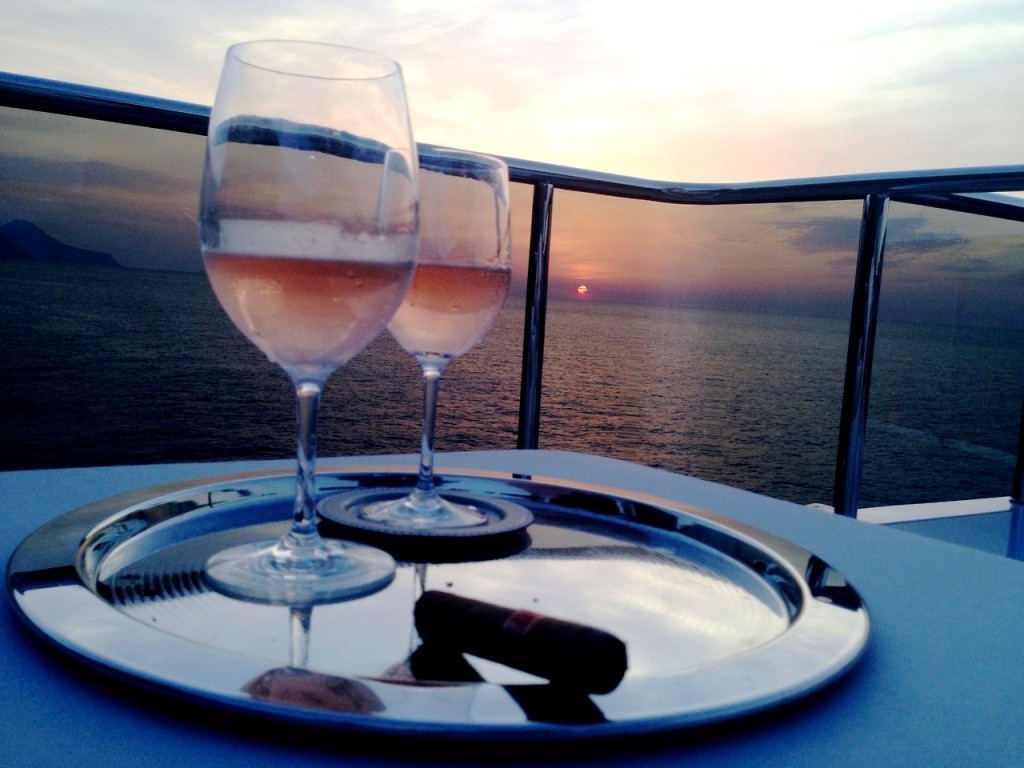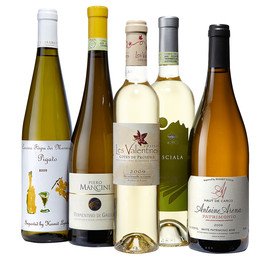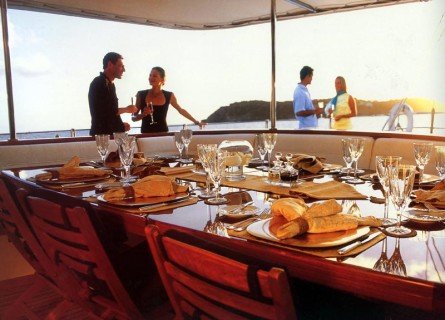A quick trip to the Mediterranean
“Mediterranean” may be the most evocative word in world geography. Is there anywhere else that conjures up more compelling images of movie stars on beaches and moguls on yachts—not to mention a diet rich in olive oil and fish? But what about Mediterranean wine? Is there a wine synonymous with this part of the world or, in this case, does the adjective “Mediterranean” simply not apply?
It would be easy to come to that conclusion by looking at the wine lists of some Mediterranean restaurants in New York, not to mention St. Louis, Los Angeles and San Francisco. I checked out a dozen such lists and found very few that offered wines with an actual directly-on-the-Mediterranean address.
One wine was particularly conspicuous by its absence: Vermentino. The bright, zippy white gets my vote as the most Mediterranean wine in the world. Vermentino has been grown in a number of Mediterranean locations for hundreds of years, including Provence and Liguria, Corsica and Sardinia. Some Vermentino vineyards, like those of Abbatucci in Corsica, even have great ocean views.
Vermentino is one of the most important grapes in Corsica, especially in the coastal Patrimonia region, where it’s also known as Malvoisie. Actually, Vermentino has even more aliases than it does addresses. It’s known as Rolle in Provence, Pigato in Liguria and Favorita in Piedmont, and there are dozens of other names as well.
Less than 10 miles south of Corsica on the island of Sardinia, Vermentino is produced in a lighter, higher-acid, more citrusy style—much like the Vermentinos (aka Rolles) of Provence. Vermentino is also produced on Italy’s mainland, in the coastal region of Maremma in Tuscany and further north in the Liguria region, where Vermentino takes on a decidedly minerally, sometimes almost stony, edge.
But to some think this wine just too obscure. Not many people drink Vermentino. No one really knows what it is. He listed the three favorite white wines of his town: Chardonnay, Pinot Grigio and Sauvignon Blanc.
Marchese Piero Antinori is one of several high-profile producers who have long produced other more famous wines (Tignanello, Solaia) but now make Vermentino as well. The Marchese Antinori began making Vermentino at his Maremma estate, Tenuta Guado al Tasso, in 1996. More recently, in 2009, the top Piedmontese producer La Spinetta began making Vermentino in Tuscany, too, under the name Casanova della Spinetta.
The majority of the Vermentinos people purchased were Italian, but some came from Corsica, some were from Provence and some hailed from distinctly non-Mediterranean locales: California and Texas. The California wine, from Uvaggio Cellars, bore a self-congratulatory back label identifying its makers as “two incredibly hip wine lovers” and Vermentino as a grape that was “Pinot Grigio meets Grüner Veltliner.”
I’m not sure I agree with either characterization (if you’re hip, do you have to say so?), though some of the lesser Vermentinos I tasted did put me in mind of a commercial kind of Pinot Grigio, i.e., simple and dilute. That’s one danger of Vermentino—it’s easy to grow and some wineries overproduce, turning out a rather flavorless, characterless white.
Thankfully there were more Vermentinos with the expected verve, including a citrusy, summery 2009 Château Les Valentines, a Vermentino blend from Provence, and an equally compelling 2009 Cascina Feipu dei Massaretti Pigato from Ligura that had a similarly bracing acidity as the Valentines but also a wonderfully minerally finish.
At the end, I couldn’t help wondering why Vermentino was still so obscure. It’s not only delicious and accessible but also reasonably priced and easy to pronounce. Its bright acidity and citrusy flavors were perfect for summer. Maybe Vermentino producers just needed some sort of collective slogan, one that would provoke Pinot Grigio regulars and also evoke its Mediterranean roots. Perhaps: “Pinot Grigio is perfect for drinking on boats, but Vermentino is the wine of yachts.”



 0
0



